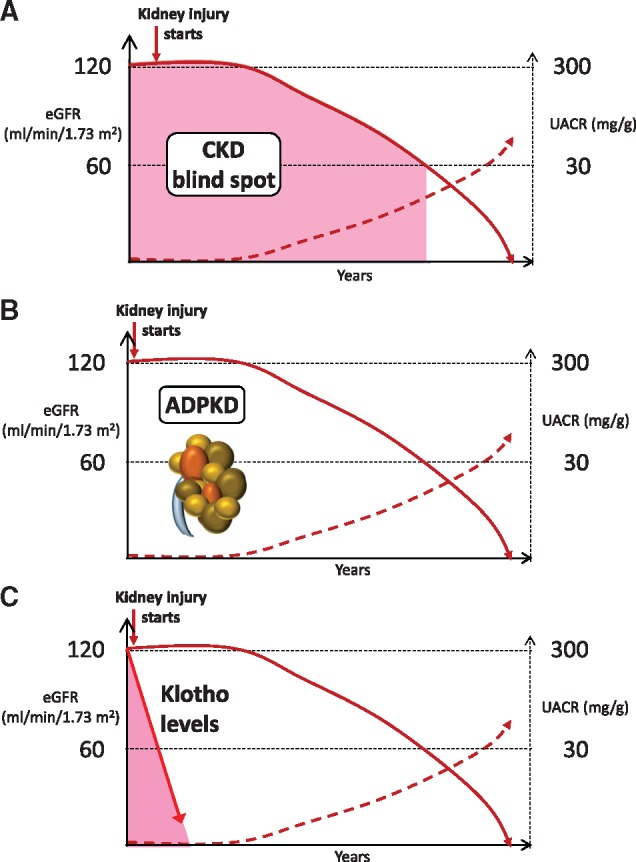FIGURE 1.

The CKD blind spot. (A) CKD blind spot. The most frequently used diagnostic and risk categorization criteria for CKD are GFR and urinary albumin:creatinine ratio (UACR). However, they represent late events, allowing for a blind spot in the diagnosis of CKD, which may last for years. This blind spot is characterized by the progression of undiagnosed kidney injury, that is, by progressive loss of GFR or progressive increase in albuminuria, but yet within limits that are not diagnostic of CKD. As it is the case with driving, a blind spot may be fatal since specific therapy may be initiated too late to prevent the need for renal replacement therapy or premature death. The CKD blind spot is coloured pink in the image. (B) Imaging addresses the blind spot in autosomal dominant polycystic kidney disease, allowing the identification of multiple bilateral cysts and the diagnosis of CKD decades before GFR or UACR become pathological. (C) If reliable biological fluid processing and Klotho assessment methods are developed, and suggestions of an early decrease of Klotho following kidney injury are confirmed, assessment of Klotho levels may potentially provide an earlier diagnosis of CKD than either GFR or UACR. (A) and (B) reproduced by Sanchez-Niño et al. [18].
